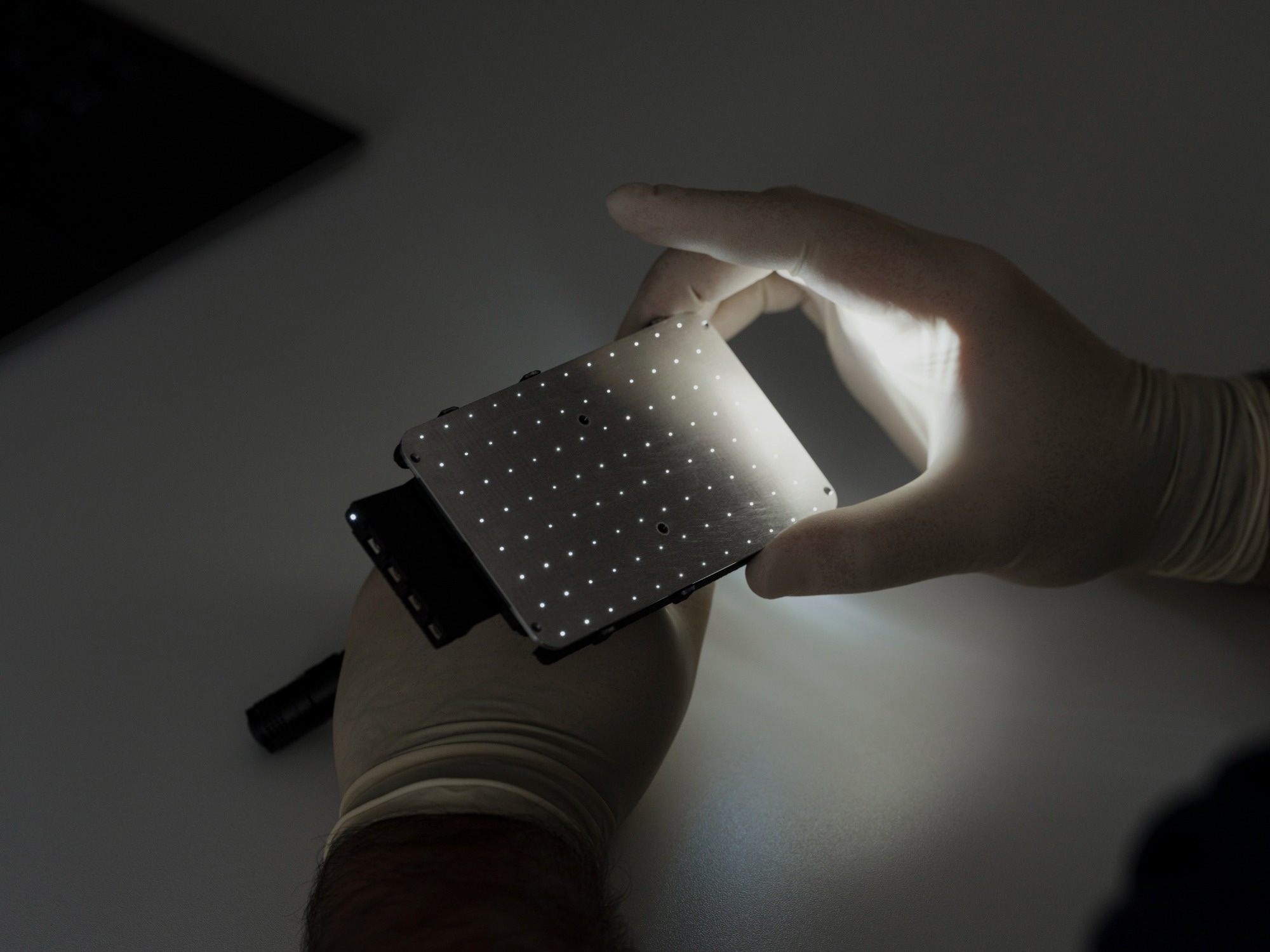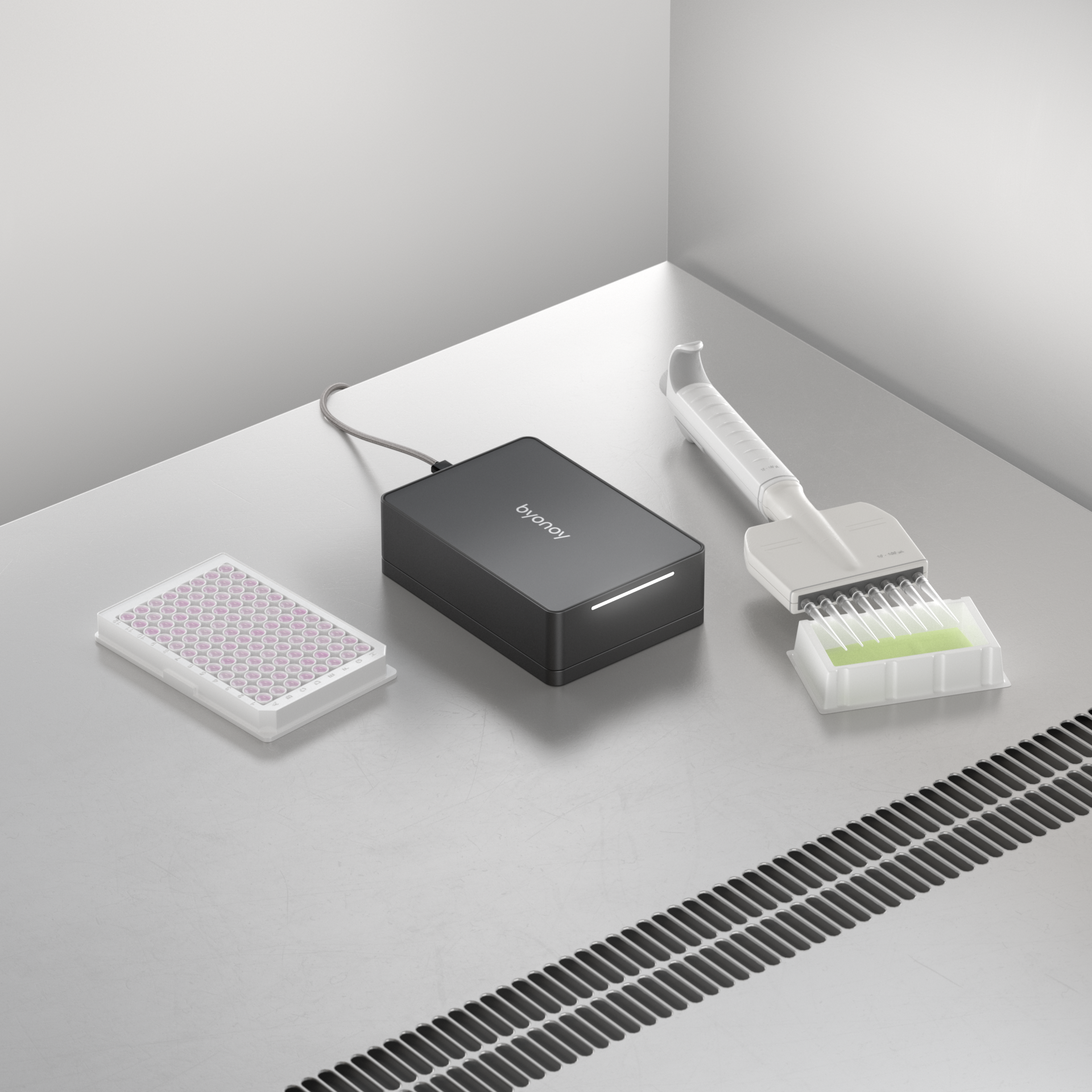Sponsored Content by ByonoyReviewed by Maria OsipovaDec 12 2023
In this interview with NewsMedical, Dr. Yousef Nazirizadeh offers insights into the advanced functionalities and diverse types of Byonoy's plate readers, underscoring their significance in the industry.
What inspired Byonoy to challenge industry norms in laboratory instrumentation, particularly in the realm of plate readers?
A good question to start with! We have been inspired by developments in the consumer goods industry that have significantly improved the ease of use and quality of products over the last 15 to 20 years. We realized how important these features are for everyone and identified a gap in the laboratory equipment industry. Therefore, we are focused on raising the standards of quality and usability and reenvision laboratories.
Our goal is to break with old lab conventions and create an environment where researchers can focus on their applications rather than being bothered by the tools they use. We believe that by integrating these principles, we can contribute to a modern change in the way laboratories work, which ultimately promotes efficiency and scientific innovation.
How does Byonoy's commitment to democratizing measurement technology positively impact researchers and laboratories?
Democratization in the context of laboratory equipment means greater decentralization. Traditionally, labs have relied on multimode readers, which are powerful but often expensive and limited to centralized facilities. In these centralized labs, researchers must go to a specific location to gain access to the necessary equipment, which can be both inconvenient and restrictive.
Our approach challenges this status quo. We offer small, flexible, single-mode readers designed for use in any lab, either at the researcher's workbench or outside in a field lab. By bringing the devices closer to the user, we aim to decentralize the workflow so that researchers are no longer solely dependent on central laboratories.
Not only portability but also affordability is an important aspect of our strategy. We provide researchers with access to high-quality laboratory equipment and ensure that cost is not a barrier to scientific breakthroughs.

Image Credit: Byonoy
Starting with the Absorbance 96 microplate reader, could you outline its key features and unique aspects of the device?
Our instruments are designed for flexibility and ease of use. Take the Absorbance 96, for example - it's a compact absorbance microplate reader that can be used in a variety of laboratory environments, including benchtops, anaerobic chambers, and field stations. This versatility opens up new possibilities for experiments.
To achieve the compactness of our instruments, we are using a solid-state technology with 96 individual detection units - a significant departure from the conventional scanning mechanisms found in traditional microplate readers. And compactness isn't just about saving space; it's our design philosophy that brings additional benefits like low maintenance and robustness.
The Absorbance 96 Automate was the recipient of the 2023 SLAS New Product Award, congratulations! What functionality does it offer, and how does it seamlessly integrate into laboratory automation workflows?
Thanks for the wishes. Actually, Absorbance 96 Automate is an evolution of our original Absorbance 96.
Many assays performed on liquid handling systems or robotic platforms have a readout as the last step, which is usually performed with a microplate reader located next to the automated system. Our strategy challenges this norm by shrinking the technology to a size not much larger than the microplate itself. This gives researchers access to a microplate reader that is directly integrated into the liquid handling system, enabling seamless automated workflows.
With our solution, there's no need for the steps of manually transferring the microplate for reading or redesigning the lab setup to accommodate the microplate reader nearby. We have incorporated grooves that facilitate the microplate reader and plate handling via built-in grippers. This greatly simplifies the integration process and not only saves valuable on-deck space but also minimizes the cost of additional third-party hardware required for automated workflows.

Image Credit: Byonoy
Please could you share the vision that drove the development of your latest product, Luminescence 96?
The success of the Absorbance 96 was for us the validation of the idea of a compact, user-friendly, and affordable device by the market and has reinforced our product development. Building on this momentum, we wanted to further expand our range of high-quality plate readers for other measurement methods such as luminescence.
With Luminescence 96, we have taken another leap forward by further innovating and improving various aspects in terms of technology and ease of use. Unlike other luminometers that require manual adjustments such as integration time and gain, with Luminescence 96 we have simplified the entire workflow. Our device takes care of these parameters internally and sets them automatically based on the specific assay.

Image Credit: Byonoy
How did your team overcome the challenges in developing Luminescence 96, effectively uniting compactness with top-tier performance?
Good question! In Luminescence 96 we are breaking new ground in detection technology. We have moved away from the conventional use of large photomultiplier tubes and have integrated highly sensitive and smaller silicon photomultipliers. This is a significant step for luminometers, as these silicon photomultipliers have not been used in microplate readers before. But to be able to use these detectors, we had to reinvent the microplate luminometer. We have made a number of inventions, which we have also registered for patents.
What are some of the advantages? Is it just in terms of compactness, or are there performance benefits?
Crosstalk, dynamic range, and background phosphorescence are major challenges for such devices. We have exceeded the industry standard in all these areas.
Due to their ultra-compact size, the proximity of these detectors to the wells is a game changer, virtually eliminating crosstalk. In addition, to maximize the dynamic range of our silicon photomultipliers, we employ three sophisticated readout methods: photon counting, integration, and micro-integration, enabling us to extend the linear dynamic range up to 8 decades. And to eliminate background phosphorescence, we use customized IR filters.
How does Luminescence 96 make advanced luminometers more affordable and accessible to a wider range of laboratories?
We believe in bringing advanced instrumentation to a broader spectrum of the scientific community. To achieve this, we apply first-principles thinking throughout the instrument development process. In this way, we don't just provide innovative solutions, we actively contribute to a change that enables laboratories of all sizes to have access to cutting-edge technology.
What lies ahead for Byonoy in terms of product development and expanding its product range? Are there any upcoming innovations or projects that you are particularly excited about?
While I can't reveal all the details of our upcoming products, I can tell you that we have several exciting ideas in the pipeline.
For example, there is a growing demand for a fluorescence reader and this area is of great interest to us. We encourage everyone to stay tuned as we explore new frontiers, and we look forward to unveiling what's next on our journey of innovation and exploration.
About Yousef Nazirizadeh
Dr. Yousef Nazirizadeh holds a Ph.D. degree in nanophotonics and biophotonics from Karlsruhe Institute of Technology (KIT) Germany. Fueled by a passion for multidisciplinary innovation and functional interface designs, Dr. Nazirizadeh co-founded Byonoy with the goal of developing high-end instruments for research. Combining his years of scientific expertise and entrepreneurial spirit, he leads as the CEO of Byonoy and oversees the company's research and development efforts.
About Byonoy
Byonoy is an emerging biotech company specializing in the manufacture of microplate readers for 96-well applications. Byonoy’s unique technical solutions have enabled them to create a new generation of plate readers with an ultra-compact footprint, disrupting the standards for instrument size. This new, compact design allows for flexible use within the laboratory, simplifying the workflow while giving the user new possibilities. With a keen eye for emerging technologies, Byonoy aims to remain at the forefront of microplate reader development, applying its unique solutions to various detection methods.
Sponsored Content Policy: News-Medical.net publishes articles and related content that may be derived from sources where we have existing commercial relationships, provided such content adds value to the core editorial ethos of News-Medical.Net which is to educate and inform site visitors interested in medical research, science, medical devices and treatments.